Cracking the Tectonics Question
October 14, 2016
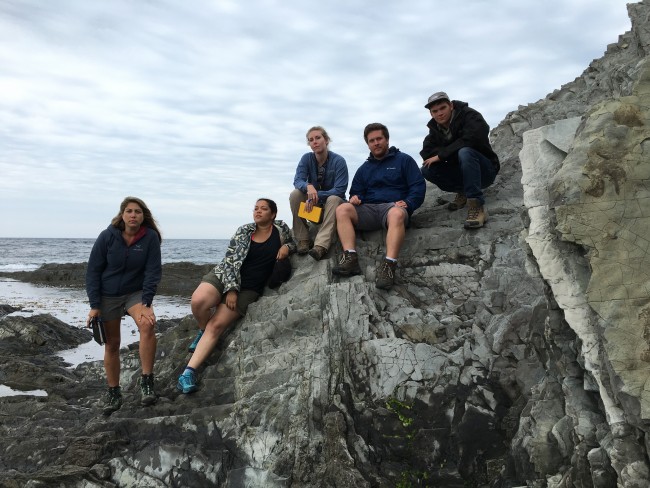
By Anton Caputo and Monica Kortsha
Plate tectonics is the dominant geological process on Earth, explaining phenomena as diverse as mountain building and megathrust earthquakes, to the distribution of fossils and living organisms across continents. But fundamental questions remain about how plate boundaries form and persist over geologic time.
These questions are the driving force behind Assistant Professor Whitney Behr’s research.
“Although I’m interested in tectonic history, much of my research focuses more on tectonic process and specifically on how the rock record can tell us about the physics of our planet,”said Behr, a structural geologist who describes her work as tectonophysics. “I mainly focus on the lithosphere because, unfortunately, those are the only rocks we have. I want to know what the rocks tell us about the forces behind plate tectonic activity, over a range of time and length scales, from the large-scale processes that drive the plates over millions of years to the micromechanics of individual earthquakes that are near instantaneous in time.”
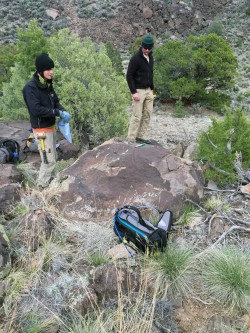
Behr leads one of the most diverse and energetic research groups in the Department of Geological Sciences, heading an array of projects that use a range of field, analytical and experimental techniques to study plate behavior at both active and ancient plate margins. The work attracts graduate students interested in studying tectonics questions from a variety of perspectives, as well as undergraduate students who are making their first forays into Earth science research guided by Behr’s mentorship. Behr is making a concerted effort on the mentorship front, launching a new program to help ensure that students from underserved minority areas aren’t lost in the shuffle when they study geosciences at The University of Texas at Austin. It’s a project that hits home with her.
“I’m a first generation college student and an ethnic minority (half Cuban), so my interest in this type of mentorship is modeled after something I had as an undergrad, which ultimately inspired
me to finish college and go on to graduate school,” Behr said. “I remember how confused and lost I was going into college as to what I was even supposed to be doing.”
With tectonics being a uniting thread, the research projects of Behr’s students span from the Earth’s upper crust to the upper mantle. Among them, Behr’s teams are working to: quantify incision rates in the Rio Grande River Gorge in northern New Mexico and relate them to climatic and tectonic forcings; understand the present-day rheology of the
lithospheric mantle and the nature of the lithosphere-asthenosphere boundary by studying xenoliths erupted from young volcanoes; and determine how the San Andreas Fault has behaved over the past 1,000 to 100,000 years through mapping tectonic geomorphic features in the field and dating their formation ages using surface exposure geochronology
“The nature of the projects my students and I work on are always quite
different, because some are focused on earthquake hazard and some are focused on understanding longer-term deformation patterns,” Behr said. “I really like the problem solving aspects of Earth sciences, and I like to bridge different scales and interact with different types of geoscientists. I’m very comfortable with learning new techniques that will help me answer any burning tectonics-related question, especially since this provides me an opportunity to collaborate with other researchers and technical experts. ”
SURFACE SIGNS
The San Andreas Fault is arguably the most well-known tectonic feature in North America. Ph.D. student Peter Gold is studying its history with cosmogenic surface exposure and pedogenic carbonate geochronology along with lidar-based surface analyses.
He is using these techniques to quantify fault displacement rates along several strands of the southern San Andreas fault system in Southern California and Baja California, Mexico.
“These types of measurements, which require analysis of high-resolution topographic data, detailed field mapping, physically demanding rock and soil sampling and weeks of complex wet chemistry, are important for understanding strain partitioning in complex fault systems and for determining the relative contribution of a particular fault to seismic hazard,”said Gold, who is working with master’s student J.J. Munoz on the projects.
Gold first met Behr at the Southern California Earthquake Center annual meeting and joined her group in 2012 on the active tectonics side of the research. He said an important strength of her program is how researchers collect and process their own samples from beginning to end.
“None of us are doing one of these projects using someone else’s samples
to interpret processes at a field area we have never been to,” Gold said. “I think that’s a really important strength of Whitney’s program. Field observations are so important for providing context, and collection and processing one’s own samples is critical for interpreting ages or rates from the measurements.”
Master’s student Travis Clow is also using cosmogenic dating. He’s applying the technique to study the evolution of the Rio Grande River over the past 500,000 years to determine whether climate, tectonics or local drainage integration is behind the river’s rapid incision in parts of New Mexico.
The research takes place in the Rio Grande del Norte National Monument near the river’s confluence with the Red River in northern New Mexico. It involves dating rocks that are deposited on old river terraces, and calculating an average incision rate for the area by comparing the age of the rocks with the distance of the terraces from the modern water line.
“We’ve observed these terraces, mapped them, sampled them and then we do geochronology to get the actual dates of creation of these terraces,” said Clow, who is doing the geochronology portion of the research at the Jackson School in Professor Daniel Stockli’s helium lab.
Clow first met Behr as an undergraduate in her graduate level microstructural geology class where he became enraptured with microstructures and geomorphology. He said he didn’t initially anticipate incorporating geochemistry into his thesis work, but that visiting the river on a field trip with Behr, Gold and Jackson School Distinguished Senior Lecturer Mark Helper piqued his interest.
“I fell in love with the field area, and it was something new to me,” Clow said. “Just talking to (everyone) about what’s going on there and being able to actually go out there made me realize this is something I wanted to pursue, and I’ve found that I like it a lot.”
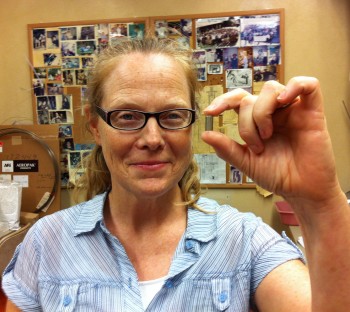
So far, the research has helped reveal a connection between changes in incision rates and periods of past climate change—a finding that might indicate that climate, rather than tectonic forces, is primarily controlling how the river is carving the land.
“Much of the area is bounded by fault zones that have active slip occurring on them, and there’s regional uplift, but the problem with our area is those rates are just way too slow for how quickly it’s incising,” Clow said.
Like Clow, Ph.D. student Pamela Speciale first met Behr as an undergraduate student.
“I was very impressed with the diversity of her interests in all aspects of geological sciences, so I decided to volunteer to work with her kind of on the side my year off between undergrad and grad school,” Speciale said.
While Clow’s work led him to focus on surface phenomena, Speciale’s research concerns dynamic recrystallization, an important phenomena that contributes to strain localization in the upper mantle, and involves the competition between grain growth, fostered by the hot mantle environment, and grain shrinkage caused by deformation at the plate boundaries.
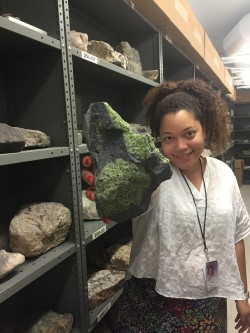
Speciale’s goal is to develop a grain-growth law by observing how olivine—the most common mineral in the mantle—behaves when subjected to pressures and temperatures equivalent to what’s found in the deep lithosphere.
Her experiments show that when cylinders of olivine are deformed under these controlled conditions, the olivine starts to recrystallize and shrink. When the stress is removed, the recrystallized grains begin to grow. Speciale said that collecting data on how conditions change olivine crystals will be key to developing a law that can improve models of grain-size evolution in deforming mantle rocks.
“These models depend on grainsize evolution, so by investigating the effects of deformation on grain growth I can provide detailed mechanical and microstructural data on how grain size evolves,” Speciale said. “If I can distinguish the conditions under which grain growth counteracts grain-size reduction, and the driving forces for growth, then others can include those parameters in models of large-scale mantle dynamics for Earth and other planetary mantles.”
Ph.D. student Rachel Bernard is also interested in strain localization in the mantle. Instead of recreating it, she seeks out evidence of strain by studying samples of mantle rocks brought up by volcanic eruptions.
These rocks, called xenoliths, are pulled from magma chamber walls during basaltic eruptions that produce lava flows at the surface. Because eruptions are rapid, and the volcanoes Bernard studies in the Mojave Desert are geologically young (less than 3 million years old), the rocks offer a snapshot of the mantle forces that shaped them without the interference that comes from long-term residence in the crust or at the surface where mantle minerals readily degrade.
“We can look at young xenoliths and infer what the mantle is doing at depth over recent timescales,” said Bernard who has an engineering background but came to the Jackson School after meeting Behr at an AGU conference. Bernard’s samples are snapshots of strain localization on the large scale. The alignment of the grains across different samples into distinct fabrics gives clues into the forces that shape mantle flow over time for a certain area.
The xenoliths collected by Bernard come from the Eastern California Shear Zone near the San Andreas Fault, the plate boundary between the North American Plate and the Pacific Plate that hosts large earthquakes but whose relationship to the upper mantle is not yet understood.
Researching such a tectonically active region can give clues into how strain is currently distributed in the lithosphere, Bernard said.
To track strain localization across the region, she spent the summer at the Smithsonian Institution analyzing xenoliths from different sites in Arizona and Nevada.
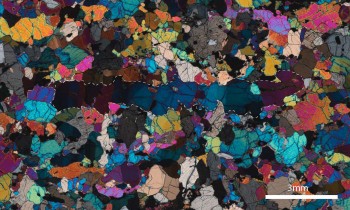
“One of the ways to figure out how strain localizes is to look at xenoliths from different regions but similar depths,” Bernard said.
Bernard’s work on xenoliths is part of a larger initiative in Behr’s research group to examine crustal and mantle rocks from several plate boundaries across Western North America: from Baja California, Mexico, to Alaska; as well as within the Mediterranean region, including the Cycladic Islands in Greece and the Andalusia region of southern Spain. Working in different regions allows researchers to examine plate boundary formation in a variety of tectonic environments.
“We need to look at a range of different rock types to see how they behave,” Behr said. “If the mantle in one area is dominantly olivine, it will have one kind of rheological behavior or flow, while if it has pyroxene mixed with olivine, it could behave totally differently. The same goes for major plate boundaries dominated by crustal rock types, such as at several subduction plate boundaries, where crustal minerals such as quartz, feldspar, amphibole or mica are more fundamental to both long- and shortterm plate boundary mechanics.”
MENTORING THE
NEXT GENERATION
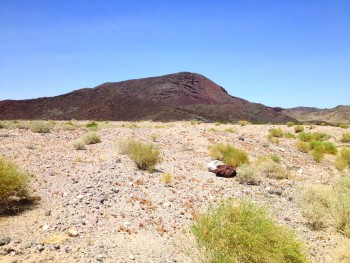
The mystery of plate tectonic boundaries throughout the lithosphere remains one of the biggest questions in geodynamics.
Understanding the process inspires Behr’s research group, but it also
can make for intimidating material, particularly to undergraduate students who come from environments not as grounded in the rigors of science in middle and high school.
Behr, who can personally relate to the challenges those students face, would like to change the equation through a new mentoring program she’s creating aimed at underserved minority populations.
“I think some people could use a little extra mentoring because this is such a big place,” she said. In February 2016, Behr received a National Science Foundation CAREER grant, one of the foundation’s most prestigious awards in support of junior faculty. The award will enable Behr to couple high-level geologic research with mentorship for students from underserved communities. It’s one among many high profile awards she received this past year (see page 35). On the research side, the project is focused on investigating the rheological properties and evolution of the subduction interface using exhumed rocks. Field sites include the Chugach accretionary complex in Alaska, the Condrey Mountain Window in northern California and southern Oregon’s Klamath Mountains and the Cycladic Blueschist Unit in Greece’s Syros Island.
Behr will be looking for prospective students to join the program, named JSGCatalyst (JSGC), this academic year.
She envisions students joining the JSGC program in their sophomore year and staying through their senior year. Behr believes that the new program, which is patterned after one that she went through as a student at California State University Northridge, could work well with programs like GeoFORCE, an outreach program of the Jackson School of Geosciences aimed at high school students from disadvantaged areas of the state in inner-city Houston and rural Southwest Texas.
“I’d like to try to catch some of these students earlier because I felt like I was caught earlier and that’s why I finished college and went on to grad school,” she said. “My hope is that with a little bit of extra effort early on, we can encourage some of these students to continue their education into the upper tiers of academia where diversity is currently lacking.”
With Behr at the helm, the research will continue to study processes—and build student skills—on the small and large scale.
Back to the Newsletter